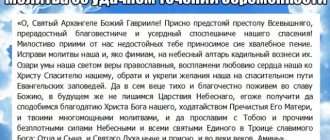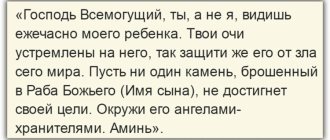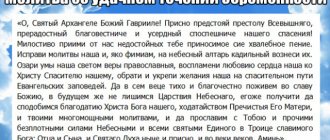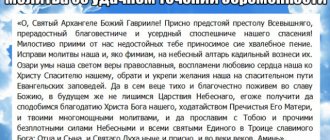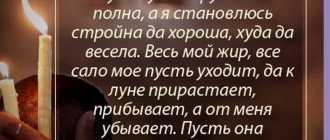The passing of a person is a very difficult loss. At such moments, a special memorial prayer can support. It is with its help that we support the deceased in the other world and give him hope that he will receive forgiveness of sins and be accepted into the Kingdom of Heaven, where his soul will find peace.
A prayer for the repose is a special text with which you can calm the soul of the deceased. With its help, the living preserve the bright memory of deceased loved ones, at the same time they come to their own peace and understanding that life goes on. Prayer for repose is important, since the Holy Scripture says that by praying for a deceased loved one, the one praying himself receives forgiveness from the Lord of his own sins.
Prayer of departure in Orthodoxy
When signs of imminent death appear, the priest invited to the dying person reads “The Canon of Prayer to Our Lord Jesus Christ and the Most Pure Theotokos Mother of the Lord at the separation of the soul from the body of every faithful believer.”
This rite was written on behalf of a man calling his neighbors to him and asking them to pray for his soul, which will soon leave the body. Prayers addressed to Christ, the Mother of God and the saints ask for help and intercession in overcoming the ordeals prepared for the soul after death. The last prayer of the canon, “spoken by the priest for the exodus of the soul,” contains a petition for the forgiveness of sins and the acquisition of a heavenly abode.
The “Canon of Prayer”, with the exception of the last prayer, can also be read by lay people. After the death of an Orthodox Christian, “Sequence on the departure of the soul from the body” is pronounced without delay.
Conducting religious funerals
Confessional funeral
Requiem.ru / Prayers /God's word
Not every secular person, not even every baptized Orthodox Christian, understands the form and content of those sacred sacraments that are performed by the church fathers at the moment when we say goodbye to our deceased relative or loved one.
Today we invite our readers to fill their possible gap in this area of theory and practice and tell us what parish requirements are in that part that relates to funeral services and repose.
WASTE
At the end of a person’s life - when leaving this world, the “departure” is read over him - a special canon , which in the small missal is entitled as follows: “Canon of prayer to our Lord Jesus Christ and the Most Pure Mother of God, at the separation of the soul from the body of every true believer” (if time does not allow you to read the entire canon, you usually limit yourself to reading only the prayer at the end of the canon and certainly spoken by the Priest at the moments of separation of the soul from the body).
Before reading this canon, the priest, as indicated in the missal, must again ask the dying person (if he has not yet lost his tongue) if the dying person remembers any forgotten or hidden sins, or anger towards one’s neighbor, etc., not confessed and not permitted. The priest helps the dying person to remember all this, asking “one by one” about what, as one can assume, the dying person could have hidden before or forgotten. Then he begins reading the canon with the usual beginning, “Blessed is our God...” and opening prayers.
After the exclamation of “Our Father...” 12 times, “Lord have mercy,” “Come, let us worship...” and the 50th psalm, after which the canon . At the end of the canon , “It is worthy to eat,” and the prayer placed at the end of the canon (besides this “waste in the large missal there is also an order for the separation of the soul, when a person suffers for a long time before death).
When the sick person has completely left , then, if he lives near the church, they ring the bell so that “Christians living in the city or town will know about the sick person who is then passing away, so that they may pray to God for him.”
After the death of an Orthodox Christian, until his burial, the psalter is read over him continuously (except for the time when memorial services or litias are performed). Since the reading of the psalter for the deceased is intended primarily for prayer for him, it is interrupted by the commemoration of the deceased with a special prayerful appeal to God, with the pronunciation of the very name of the deceased. It is customary to repeat such a prayer appeal at the end of several psalms, separated by the word Glory . This prayer, beginning with the words: Remember, O Lord our God... is printed not between psalms, but in the sequence “for the exodus of the soul,” which is found both in the small psalter and in the psalter with succession.
The Psalter is read not only in those days when the deceased has not yet been buried, but also after burial; Usually in some places the reading lasts up to 40 days.
The Gospel is supposed to be read over a deceased priest, instead of the psalter; The Gospel is read over him both before, when he ends, and after his death, as long as time allows.
Upon the death of a layman, his body ( relics , as the breviary puts it) is washed, dressed in clean clothes, consistent with the rank and service of the deceased, and placed on a prepared table in the middle of the room. A crown is placed on his forehead , a cross is given to his folded hands (usually) or an icon of the Savior is placed on his chest.
Then the deceased is covered with a new white blanket, otherwise known as a shroud. Moreover, the entire body is covered with a sacred veil (church brocade).
The deceased is placed face up, with his eyes closed, as if sleeping, with his lips closed, as if silent, and his hands are folded crosswise on his chest. On both sides of the table on which the deceased lies, and in his heads (or only in his heads) lamps are burning.
When the deceased has already been removed, the relatives invite a priest to serve a litia for the deceased (sometimes instead of the first litia, a memorial service is sung, the rite of which is set out at the end of the psalter).
The litiya in the breviary is indicated to be performed before the deceased is taken out of the house to the church, and it is also usually always served while the deceased is still lying in the house and upon the return of the relatives to the house after the burial of the deceased. In addition, it is also served during other services, namely: at the liturgy - it is, as it were, part of it, because in this case there is no special beginning for the litia, no dismissal is made and “eternal memory” is not proclaimed; the prayer behind the pulpit is sung: From the spirits of the righteous who have died... and the litany is proclaimed. At Matins and Vespers, the lithium is usually performed at the end of these services.
In general, the lithium is always performed during the service of funeral liturgies, as well as on days established by the Church for deliberate commemoration, if where there is no custom on such days to perform a memorial service, as a service containing more prayers.
The lithium is also part of the burial and requiem service: the burial begins with it, as a separate service, and ends with it, but in conjunction (the lithium at the end of the burial begins after the kissing stichera). The requiem service also ends with a lithium (in the requiem service the lithium begins with the exclamation of the Lord's Prayer according to the 9th song of the canon).
A table is placed on which the kolivo is delivered (as at a funeral service); the priest, having put on an epitrachelion (or a phelonion), distributes lighted candles to those present and, having accepted the censer (if there is a deacon, then he, with the blessing of the priest), burns incense around the capital and those present, and lays the beginning: Blessed is our God... The psalmist reads the trisagion and other beginning prayers. After the exclamation of the Our Father , troparia are sung: From the spirits of the righteous who have died... and so on. and then a special litany is pronounced - the funeral litany: God have mercy on us... at which (as always), the priest secretly reads the prayer: God of spirits , and after an exclamation there is a funeral dismissal, after which “eternal memory” is proclaimed to the deceased (or deceased); and again incense is performed around the capital and towards those coming.
On the day of burial, when everything is ready to carry the deceased into the church, the priest sprinkles the coffin with holy water inside and around, and then places the deceased in the coffin. Before the removal, a lithium is performed, and at the end of it, the priest begins the burial, i.e. proclaims: Blessed is our God... The singers protractedly sing the Trisagion after Amen and with this protracted singing of the Trisagion they carry the deceased to the church (the body of a layman is carried by the laity, not by the priests). If several priests are escorting the deceased, then they go two in a row: the younger ones are in front, the older ones are closer to the coffin, the leading priest walks with a cross behind the lid of the coffin, which is carried behind the holiness or behind a large cross worn in front of the procession or behind a home icon . The deacons precede the priests with censers. The coffin is carried behind the clergy and candlesticks are carried along its sides. Along the way, from time to time, the procession usually stops to read the Gospel, and the funeral Gospels are read in order. At the entrance to the temple, the lid, as a rule, is left outside, but the coffin is placed in the middle of the temple, feet first, so that the deceased seems to be facing east; candlesticks are supplied in the head and sides of the coffin.
When the deceased is brought into the temple, the singing of the Trisagion , sung on the way to the temple, stops;
the priest (or deacon) opens the curtain at the royal gates and, going out to the coffin, distributes lighted candles to the people and then burns incense around the coffin on four sides. Note. If the priest did not participate in carrying the deceased from the house to the temple, then the burial begins in the temple in this way: having opened the curtain of the royal doors, the priest goes out to the deceased, distributes lighted candles to the people, and, having lit around the coffin, begins, as usual, “Blessed is God ours,” then “Holy God” is sung three times, the psalm “Alive in the help of the Most High...” is read, etc. in order. The censer, as a rule, is not given here, but is kept during the entire funeral service, and, on the “immaculate virgins,” the priest censes the entire church, around the coffin and those standing next to him, “to the deacon before him” with a candle; Around the coffin, incense is still performed: during the singing, and Eternal Memory With the Saints .
In general, incense should be smoked, as well as candles should be lit throughout the burial. At that time, the psalmist reads Psalm 90: Alive in the help of the Most High...
At the end of the psalm, the blameless ones - three articles; - according to the first and second of them, funeral litanies are proclaimed, and according to the third, stichera (immaculate troparia) are sung with the verse “Blessed are you, Lord...” and at the end of them - again the funeral litany.
Next is the troparion (otherwise called the sedal chamber). The rest of our Savior is with the righteous , read to the end; also the Mother of God, shining forth from the Virgin... , the singers sing only the last words: and all that love for mankind is in knowledge and ignorance and the sons of light, have mercy on us , and after this the 50th psalm is read and they begin to sing the canon in the 6th tone of Yako according to judgment... (with the canon the chorus is usually sung: Lord rest the soul of Thy servant .
For each song, the priest sings the chorus once; another time - the singers, then the priest Slava , - the singers even now , and before the 3rd, 6th and 9th songs, the choruses are repeated twice in the same order. According to the 3rd canto, the funeral litany, Sedalen and Theotokos. Sedalen and Theotokos are usually read, and when the psalmist finishes reading them, then the last words from them are sung: In the same Christ God, give rest to your departed servant (thy servant), as a lover of mankind , and yet intercede and have mercy on me . According to the 6th canto, the litany is read and the kontakion is sung: Rest with the saints . While singing the kontakion, the deacon censes, as at the beginning. Ikos is read, but usually the last words from it are sung: a funeral sob creating a song, hallelujah , then the kontakion is sung again: Rest with the saints , and the canon continues.
According to the 9th song, the litany is proclaimed and the stichera are sung in self-concordance: What is the sweetness of life... and so on, and after them the blessed ones .
Then the Apostle and the Gospel are read and the litany is read again, in which the leading priest reads the prayer: God of spirits , not secretly, as always, it is read, but aloud: the other priests serving him read it secretly. After the litany, the stichera of kissing are sung. (The candles that were in the hands of those present are given to the deacon or psalm-reader, and everyone approaches the coffin, kissing the aureole on the head of the deceased and bidding farewell to him).
At the end of the stichera, there is again a funeral litany and a funeral dismissal, which the priest makes, turning to those present. The deacon proclaims: In the blessed Dormition... and the singers sing three times: “eternal memory.” Then, after shouting to the Lord, let us pray , the priest reads a farewell, or prayer of permission, which is then placed in the right hand of the deceased (in some places the prayer of permission is read immediately after the Gospel, followed by “kissing the deceased,” during which the priest goes to the altar, after “kissing” the litany is proclaimed and there is a dismissal of the “futule”). After reading the prayer of permission, the deceased is taken out of the church to the cemetery with the drawn-out singing of the Holy God ; this singing continues until the grave.
Before being lowered into the grave, if the deceased was anointed with oil, the oil remaining from the blessing of oil is poured on him in a cross shape, and the coffin is closed; others pour ashes from the censer onto the coffin (when pouring oil on the deceased, it is indicated to sing “Hallelujah” three times, which is still observed in other places). The coffin is lowered so that the deceased faces east. When the coffin is lowered, the litiya is sung again (in some places this litiya is sung not at the grave of the deceased, but in his house, when the relatives return from the grave after burial). When the coffin is lowered into the grave, the priest takes a little earth with a shovel and intersects the deceased, i.e. sprinkles earth in a cross shape on the coffin of the deceased, saying: The Lord's earth and its fulfillment; the universe and everyone living on it .
print version
Shahada and dua of a dying Muslim
Before death, a Muslim must recite the shahada “La ilahe illal lakh.” Muhammadun rasulul lah" (“I testify that there is no other deity but Allah and I also testify that Muhammad is the messenger of Allah”). If the dying man’s strength has left him, this testimony of faith in one God and in the messenger mission of the Prophet Muhammad is whispered in his ear.
In addition, the dua prayer of the dying person can be said: “Laya ilyayahe illal laakh, inne lil mavti sakyaraat. Allahumma gfirlii, va rhamnii, wa alhiknii bir rafiikil a'lya. Allahumma a'inniy 'alaya gama raatil mavti va sakyaraatil mavt" (“There is no god but the One Lord. Truly, terrible torments accompany death. O Almighty, forgive me and have mercy. Raise me to the highest society. Help me pass [with patience and faith] through the death throes").
Kaddish - Jewish funeral prayer in Russian
The Kaddish prayer literally means “sanctification.” The main purpose of this prayer appeal is to use a person in mourning for the deceased as a prayer. The recitation of Kaddish is the last kindness of a living person towards his deceased loved one.
It is with this that the custom of reciting “Kaddish for the Orphans” is connected. It is believed that the memorial prayer “Kaddish” eases the suffering of the soul of a deceased person, who at first struggles and does not find a place for himself in an unfamiliar world. With the help of this prayer appeal, severe trials can be averted from the newly deceased for his sins committed during his lifetime. Prayer helps the soul of the deceased to rise higher, which means it will come closer to the Almighty, which increases the chances of the soul resting in the Kingdom of Heaven.
An ancient Jewish tradition, which is transmitted from the mouth of Rabbi Akiva, explains that the funeral prayer "Kaddish" can mystically change for the better the decision made at the Last Judgment if it is often recited up to 11 months after death. This period is due to the fact that in Judaism it is believed that only the souls of notorious villains remain in Gehenna after 11 months. All other deceased also undergo testing in Gehenna, but they are aimed only at cleansing the soul. After this, all the pure souls of the deceased cross into paradise, which is called the “Garden of Eden” in the Jewish religion.
The funeral prayer "Kaddish" is read only in a minyan, that is, when there are at least 10 people over 13 years of age in the congregation. People should stand straight with their eyes closed and recite the prayer text loudly.
Translated, the funeral prayer “Kaddish” sounds as follows:
“May his great name be exalted and sanctified! (Community answer: Amen!) In the world he created, let his royal power be established, let him cultivate salvation for people. May he bring the coming of his Moshiach closer (Community response: Amen!) During our lifetime we will say: Amen! (Community response: Amen!) (Next, public reading is performed.) May his great name be forever blessed! May the name of our Creator be blessed and praised, glorified by us and exalted and honored. We chant all the name of the Great Creator. Amen! (One person reads further) Above all the blessings and chants, praises and consolations uttered in the world, let us all say Amen! (Community response: Amen!) We ask that strong peace and a happy life be granted to us from heaven, let’s say: Amen! (Community response: Amen!) Who establishes peace in heaven, he will send peace to us, to us and to all Israel. Let's all say: Amen! (Community response: Amen!)"
Author of the article:
Natalya Nadezhdina
Deathbed repentance and glorification of God in Judaism
When a person of the Jewish faith dies, they stand at his bedside and say the confessional prayer “See” with him. If the dying person cannot pronounce it completely, then he at least says: “May my death atone for all my sins” and mentally regrets all his sins. After confession, Psalms are read: 121, 130, 91.
When the soul is about to leave the body, you should read: “Shema Yisrael Adonai Eloeinu Adonai Echad” (“Hear Israel, the Lord is our God, the Lord is one!”), three times the verse “Baruch shem kvod malchuto leolam vaed” (“Blessed is the glorious name His kingdom forever and ever!”), seven times “Hashem U-Aelokim!” (“The Lord is God!”) and once “Hashem Melech, Hashem malakh, Hashem imlokh leolam vaed” (“The Lord reigned, the Lord reigns, the Lord will reign forever and ever”).
Text of the funeral prayer for the deceased
It is customary to pray for the newly deceased not only to Jesus Christ, but also to the Most Holy Theotokos.
The text of the funeral prayer to the Most Pure Virgin Mary for the newly deceased is as follows:
“Most Holy Lady of Heaven, Most Holy Theotokos! I come running to You with prayer for the newly deceased servant of God (name of the deceased). You are our intercessor and ambulance, a never-ending intercessor before God. I offer you a prayer in my difficult hour and ask you to help the newly deceased servant of God (name of the deceased) to cross a path unknown to him. I pray to You, Heavenly Lady, by your power to drive away from his soul the terrible forces of dark spirits, let them fall on their faces before you in confusion, disgraced and destroyed. Free the soul of the newly departed servant of God (name of the deceased) from the torment of the air tax collectors, overthrow them like earthly evil-minded enemies. Become for him, All-Merciful Most Holy Theotokos, an intercessor and protector from the prince of air darkness, who is a tormentor and a champion on terrible paths. Most Holy Theotokos, I ask you to use Your honorable robe to protect the deceased person close to me. Help him move from earth to heaven without fear and with confidence in forgiveness. Do not consider my request daring, Heavenly Queen, and respond to it. I beg you to help him withstand the Last Judgment, intercede with God for forgiveness of his voluntary and involuntary sins, which he repented of during his lifetime. Pray, O Most Holy Theotokos, for your son our Lord Jesus Christ to rest the soul of the newly deceased in the Kingdom of Heaven. Amen".
This prayer can be read both at funeral services for 9 and 40 days, and at the cemetery. In the second case, after prayer you should be silent for a while, and then clean up the grave and go home. In Orthodoxy, it is not customary to leave a glass of vodka and a piece of bread on a grave, since such a ritual action belongs to pagan traditions.
Question and answer
Are there special Buddhist prayers before death?
In the Buddhist tradition, it is especially important that the dying person be conscious. At the same time, he should repeat the “Refuge” mantra out loud or mentally. Its translation: “I, together with all living beings, seek refuge with the Buddha, Dharma and Sangha until we all achieve Enlightenment.”
Where can I find the text of the “Canon of Prayer”?
It is located in the Orthodox Prayer Book.
Is it possible to somehow alleviate the condition of an Orthodox Christian who is losing his life long and painfully?
Saint Andrew of Crete wrote a special “Rite for the separation of the soul from the body, when a person suffers for a long time.” Following the usual beginning, it includes psalms 69, 142 and 50, the canon, the prayer “It is worthy to eat,” then “A prayer for the judged soul” and “Another prayer for the long-suffering to die.” These prayers can also be read by an Orthodox layperson. In this case, instead of priestly exclamations, the Jesus Prayer is said, and those prayers that are supposed to be read by the priest are skipped.
What is a funeral prayer and how to read it
The importance of prayer for the repose of the soul cannot be overestimated. The whole point is that immediately after death, the soul of a departed person continues to remain on earth for up to 40 days. Then there will be the Last Judgment, which will decide the fate of the soul of the deceased; it will be sent to heaven or hell. All this time you need to read a memorial prayer for the repose of the newly deceased. If the relatives of the deceased consider themselves non-believers or simply do not know how to pray correctly, then they should order a memorial prayer in the church. In this case, it must sound at least three times: after the funeral, for 9 days, for 40 days. In the church it is necessary to light candles for the repose of the deceased; it is permissible to invite a priest home to read a prayer for the repose among relatives and close people.
The prayer for repose represents a certain message to the Lord God. A praying person turns to the Almighty to protect the soul of the deceased. He asks to support the soul of the deceased in the other world and show it a new correct path. The prayer contains a request for forgiveness of a person’s sins committed during life. In order for the funeral prayer to be heard, you need to pronounce it as sincerely as possible. You cannot pray for repose in passing; all words must come from the depths of your heart, and the person praying should not have evil thoughts. Such requirements are due to the fact that when praying, a person comes into contact with his own soul with the Lord, and the Almighty sees any insincerity.
Prayer for the repose of the soul should be treated as a debt that must be paid to the deceased person. After a conversation with God, the soul of the praying person calms down, the acute pain of loss subsides and relief comes. The more often the funeral prayer is offered up to 40 days, the faster it will be possible to heal and recover from irreversible loss, which will again allow you to feel the taste of life.
Reviews
Read all reviews >>>
February 22, 2022
Many thanks to Arthur Dmitrievich Yakovlev for good organization and tact during this difficult period for me.
Oleg
February 19, 2022
Many thanks to Yuri Alexandrovich Pustokhod and the team of the City Ritual Service. Mom died on the evening of December 30th. I called several services. Many simply did not work on the holidays...
Natalia
Rate material
Next >>


